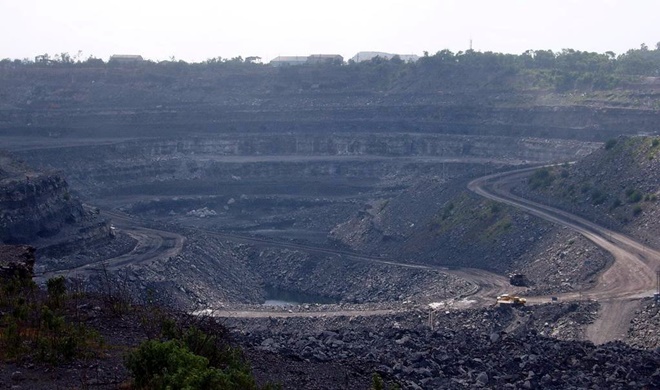It is the age of communication and precisely marketing communication where selling the idea is important and that is how ‘statesmen’ keep the masses informed or uninformed. Masses, naïve and predictably meek, are beguiled by the mantras manufactured by PR firms and chanted by cult leaders, feign to understand the ground reality. The idea is well garbed under the slogan of ‘inclusive growth and development’ leading to the ‘common good of all’. And thus the formula sells: the newest one in line is that of ‘Aatmanirbhar Abhiyan’. Strangely though, with the rising conundrum of the revered slogan of ‘Aatmanirbhar Bharat’ is the rapid privatization and opening of foreign direct investments in crucial services and sectors, right from the railways, to coal mining, and aviation to telecommunication.
In June this year, the Central government decided to begin the auction of 41 coal mines for commercial mining. It means that the energy companies over the world can bid for the allocation of these mines, which according to the Ministry of Coal is expected to generate around INR 33, 000 crore of capital investment in the country over the next five to seven years. That is actually too many zeroes for the majority of the population to decipher. The decision also comes with the promise of growth and prosperity to the regions concerned.
Coal mining is not an innocent sector to say the least when it comes to the hazards it brings along, to the topography and the human population of the area. Just a case in point is Hasdeo Arand, one of the pristine forests of central India, that has already been under threat since the time mining of rich coal reserves started by the Adani Enterprises through its subsidiary Rajasthan Collieries. Needless to say, the biodiverse region that is home to the Gond tribe of the region and innumerable animals and plant species are under threat of displacement and extinction.
In allotting the sites for new coal mines, the government has overlooked or bypassed concerns raised by the locals and organizations fighting against environmental damage caused by reckless mining. Coal mining not only destroys landscapes and habitats but it leads to deforestation, soil erosion, contaminates ground water, causes chemical and dust pollution, etc. During the mining process methane gas is released which is primarily tapped and used as a fuel but some of it escapes in the atmosphere and contributes to greenhouse effect. In fact, studies suggest that in the first two decades after its release, methane gas is 84 times more powerful than carbon dioxide and results in considerable global warming.
Linking the commercializing of coal fields to boost the economy hit by the pandemic is not a logical conclusion to draw from the move because much before the economic impact of Covid 19, in March this year, the Central government through an ordinance made amendments to the Coal Mines (Special Provisions) Act, 2015. Through the Act, the government expanded opportunities for privatized, commercial mining. While most of us would not be keen to delve into the intricacies of the ordinance, the one major change which would affect everybody is the relaxing of ‘washing’ of coal, required for it to be a cleaner fuel. In order to reduce the production cost of coal and attract investors to a not so promising coal sector, the government has compromised on reducing carbon emission and pollutant checks through the process of ‘washing’.
Foregoing the ‘washing’ requirement, would result in the emission of more particulate matter, noxious gases, and greater carbon emission. With India’s major cities air quality index already reaching alarming levels, it is now time to turn the pristine ecological heavens in sync with their urban counterparts, all in the name of growth and prosperity. Burning of coal results in the release of airborne toxins and pollutants such as nitrogen oxide, mercury, lead, sulphur dioxide, heavy metals. The impact of exposure to such chemicals can lead to a number of illnesses such as asthma, cancer, neurological disorder, heart disease, brain damage and premature death.
Apparently, the allocation of 41 coal blocks for commercial mining has put India in the driver’s seat, making it self-reliant for its fossil fuel energy needs. This brings us to the question of India’s commitment to the Paris Climate Agreement 2016 according to which the country has committed to generate at least 40 percent of its electricity through non fossil fuel sources by 2030. India is the third largest carbon emitter in the world primarily because of its dependence on fossil fuels. Positively, India is endowed with rich renewable energy resources, which still remain highly untapped, though they are the answer to the country’s rising energy needs and concerning environmental degeneration. With global companies keen on taking the plunge, with around $ 7 billion of foreign direct investment between June 2018 and April 2020, why is there a need to expand an unsuitable and cumbersome energy resource like coal?
Foreign investment is welcome as long as it is bound by regulations to ensure the land and its habitants are not exploited and their welfare stands a chance. Hope the government of India is mindful and has learnt from the Bhopal Gas Leak disaster to bargain crucial commitments from competitive private investors to ensure such a mammoth devastation of lives and resources is not repeated again by compromising on the safety and well-being of the people it promises to uplift.

